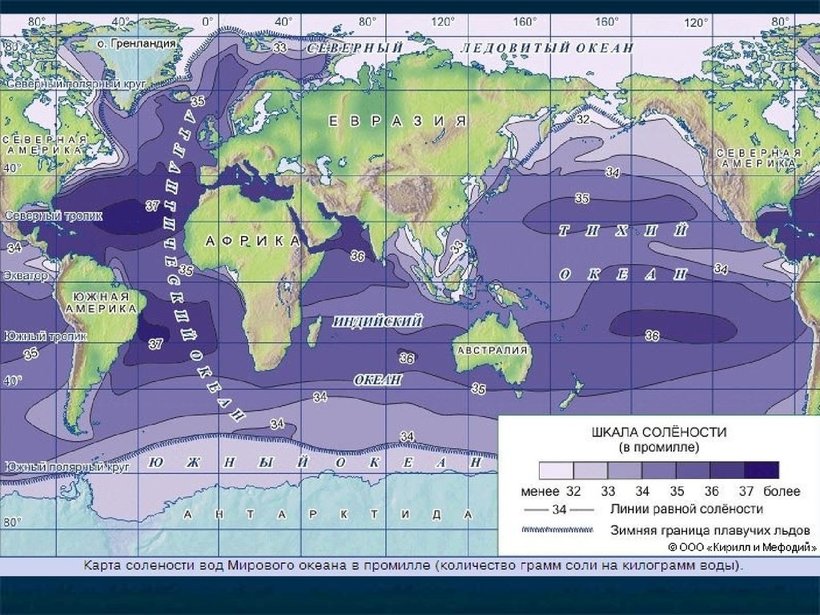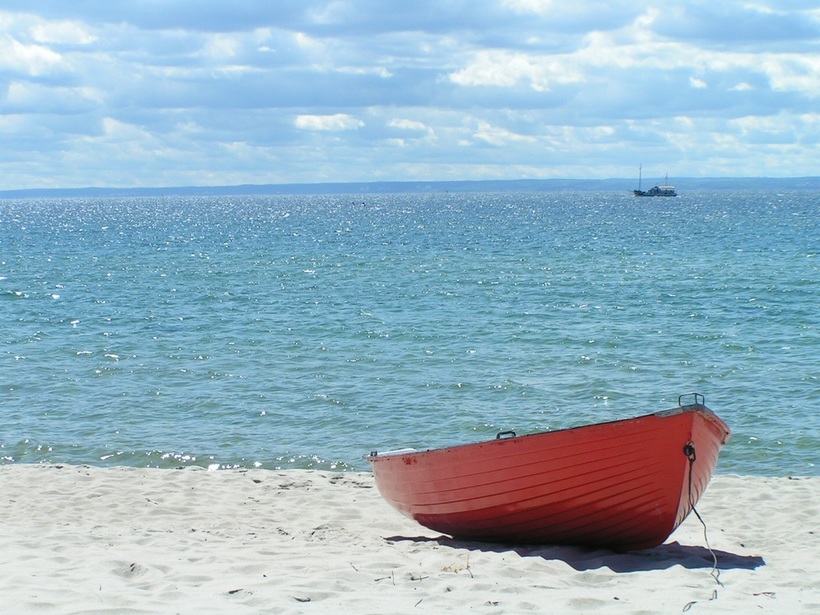Every year my parents took me to the sea during their summer holidays, and I was always surprised by this unusual bitter-salty taste of sea water, which, of course, I swallowed during the incessant swims, surface and underwater. Later, in chemistry lessons, I learned that not only kitchen sodium chloride determines the taste of the sea, but also magnesium with potassium, and it can even be in the form of sulfate or carbonate.
Salt water occupies most of the waters of planet Earth. The first living organisms appeared in the ocean. So what is this water like?
Salinity of the World Ocean
On average, the salinity of water is 35 ppm with a deviation from this value by 2-4%.
Lines of constant salinity (isohaline) are mainly located parallel to the equator, along which waters with not the highest salt concentration are located. This is due to the abundance of precipitation exceeding the volume of water evaporating from the surface.

With the distance from the equator to the subtropical climate zones up to 20-30 latitudinal degrees, areas with increased salinity are observed in the Southern and Northern Hemispheres. Moreover, in the Atlantic Ocean, areas with the maximum salt concentration have been identified.
Towards the poles, salinity decreases, and about 40 degrees there is an equilibrium between precipitation and evaporation.
The poles have the lowest salinity due to the melting of fresh ice, and in the Arctic Ocean, the runoffs of large rivers have a great influence.
The saltiest sea
The Red Sea is saltier than the rest of the planet's waters by more than 4% due to:
- low amount of precipitation;
- strong evaporation;
- lack of rivers bringing fresh water;
- limited communication with the World Ocean, in particular, with the Indian.
One of the most beautiful seas with coral reefs, which attracts with its bright colors both a large variety of fish, sea turtles, dolphins and diving enthusiasts.

The sweetest salty sea
The Baltic Sea contains 2-8 g of salts per liter of water. It was formed on the site of a glacial lake with a large number of rivers (more than 250) that reduce salinity, and weak contact with ocean waters.




